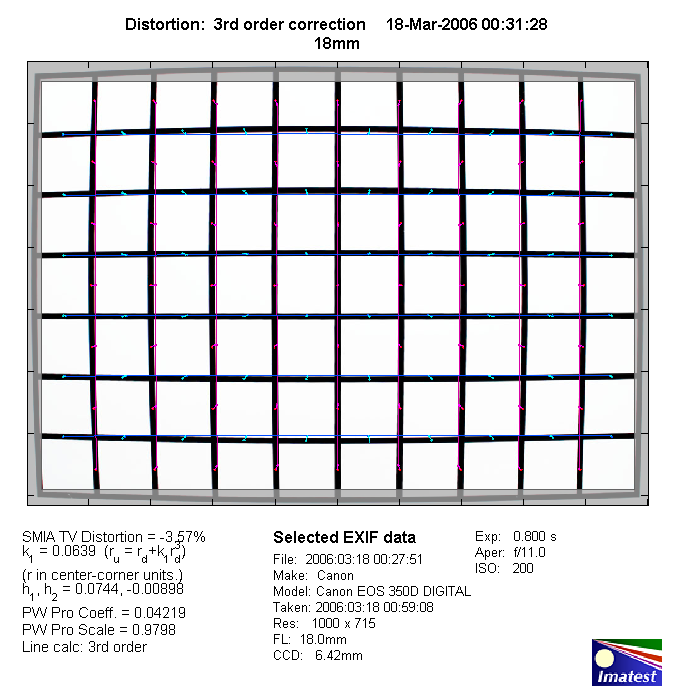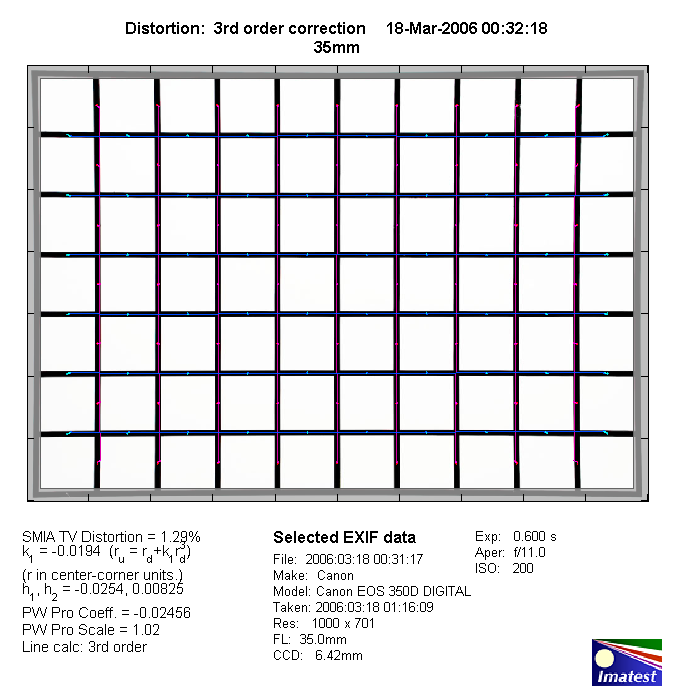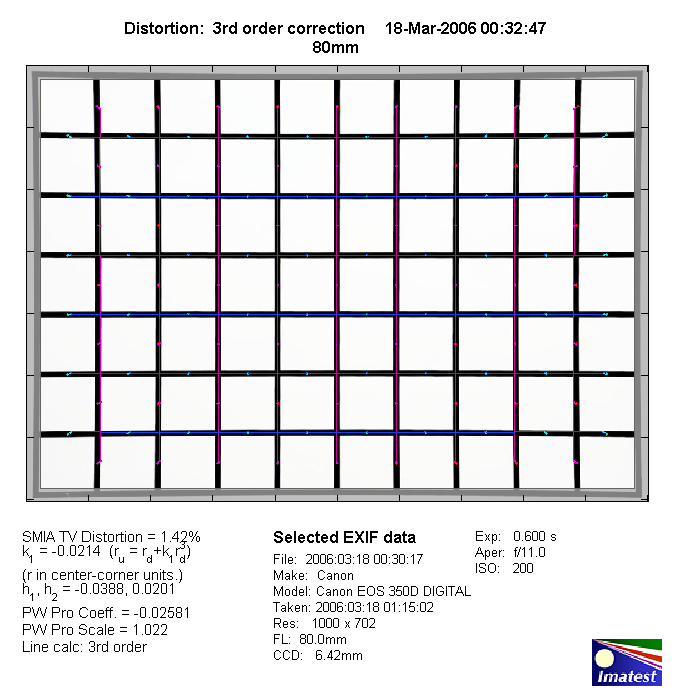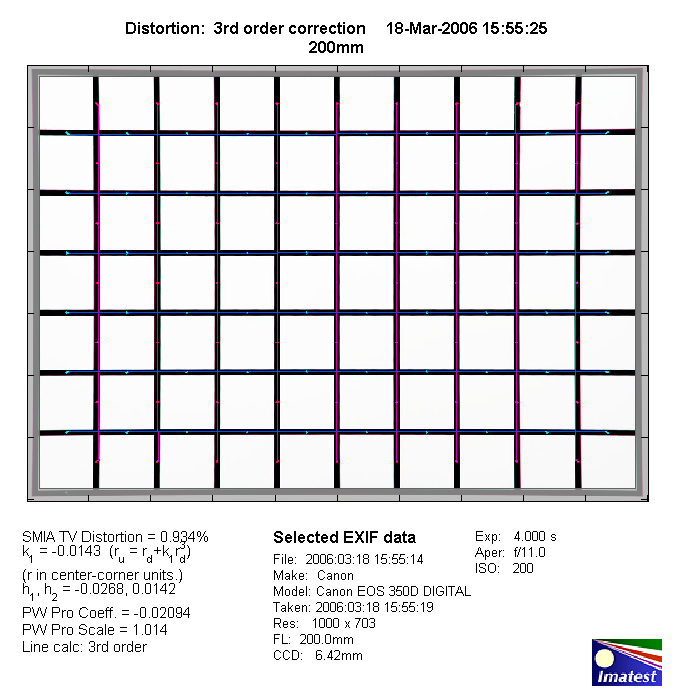|
Tamron AF 18-200mm f/3.5-6.3 Di II LD Aspherical (IF) XR macro - Review / Test Report - Analysis |
|
Lens Reviews -
Canon EOS (APS-C)
|
|
Page 2 of 3
Distortion
The Tamron shows a rather extreme degree of barrel distortion (3.6%) at 18mm
which is only topped by the Canon EF 17-85mm IS so far. At 35mm and 80mm
the situation changes to pronounced pincushion distortion decreasing
to moderate pincushion distortion at 200mm. All-in-all no lens that you'd like
to use for architecture photography.
18mm:

35mm:

80mm:

200mm:

The chart above has a real-world size of about 120x80cm or 40x the focal length.
Expect more distortion towards closer focus distances.
Vignetting
The vignetting characteristic of the Tamron is generally decent EXCEPT at 18mm @ wide-open
aperture where the problem is very pronounced at 1.4EV. It's probably a good idea to
avoid that setting (as we'll also see in the MTF chapter). From f/5.6 there's only
a moderate to low degree of vignetting throughout the zoom range.

MTF (resolution)
In the MTF lab the Tamron delivered a relatively decent but certainly not flawless
performance. The center portion is generally very sharp with excellent resolution
figures at the wide end and still very good quality at 200mm. Unfortunately this isn't
quite true for the borders at the extreme ends of the zoom range.
At 18mm f/3.5 the border resolution is dismal but stopping down to f/5.6 lifts
the quality to acceptable levels. A similar behaviour is observable at 200mm where
the borders are quite soft at f/6.3. There's a slight increases in
quality here towards medium aperture settings.
Please note that the MTF results are not directly comparable across the different systems!
Below is a simplified summary of the formal findings. The chart shows line widths per picture height (LW/PH) which can be taken as a measure for sharpness.
If you want to know more about the MTF50 figures you may check out the corresponding Imatest Explanations
Chromatic Aberrations (CAs)
Chromatic aberrations (color shadows at harsh contrast transitions) are very pronounced
at the extreme ends of the zoom range peaking in an average width of 1.4 pixels at the
image borders. Reducing CAs via tools (e.g. RSE Essentials or PS ACR) may be a good idea
here. At 35mm and 80mm the issue is rather moderate.

|